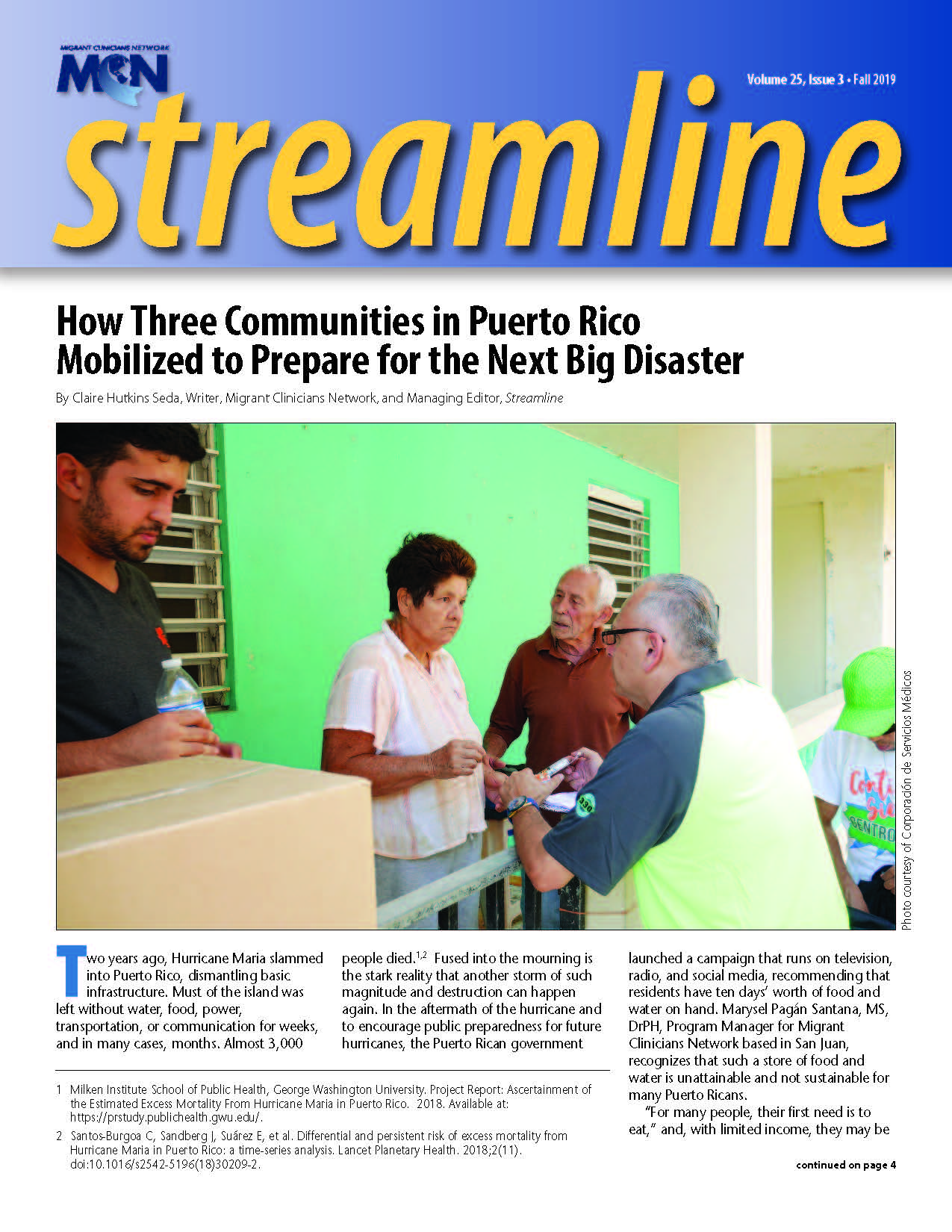- Who We Are
- Clinician Employment
- Publications
- Witness to Witness (W2W)
- El Premio Kugel & Zuroweste a la Justicia en la Salud
- Your Voice Matters: Photovoice Project

CKDu: Why Catching Hypertension Is Critical for Young Latino Agricultural Workers
Hypertension among young Latinos may be an early sign of chronic kidney disease of unknown ideation (CKDu). Over a period of ten years, over 20,000 young men -- mostly agricultural workers -- died in Nicaragua from CKDu; Sri Lanka has also documented 20,000 deaths from the disease. Early data suggest a link between kidney disease and regular exposure to extreme heat and dehydration. Meanwhile, increases in CKDu have been documented among agricultural worker populations throughout Central America, in Brazil, Qatar, India, Egypt, and many other countries with warm climates around the globe. As climate change progresses, this epidemic may travel northward or intensify. As migration continues apace, many young, seemingly healthy agricultural workers already working in communities around the United States may have early-stage CKDu. With few signs presenting in the early stages, many affected young adults may continue to work day after day in conditions that will only exacerbate their declining kidney function. It is important for clinicians to question their patients about their work conditions and counsel rehydration and attention to symptoms such as: swelling in the feet and ankles, dark urine, decreased mental alertness, and reduced urine output.
For more information: La Isla Network is dedicated to ending chronic kidney disease of undetermined causes (CKDu) among workers and their communities worldwide. Visit their website for more on CKDu, the latest research, and country-by-country maps of CKDu incidence: www.laislanetwork.org.
The Worker Health and Efficiency (WE) Program, a collaboration between La Isla Network, the Occupational Safety and Health Administration, and health experts, aims to end the CKDu epidemic. Their interventions that promote rest, shade, and water for outdoor workers and efficiency trainings have shown promising early results, including a decline in reports of heat stress symptoms; a 100% drop in heat stroke; a stabilization of declining kidney function among workers; and increased worker productivity. Learn more about their interventions at: www.weprogram.org/
By Claire Hutkins Seda, Writer, Migrant Clinicians Network, Managing Editor, Streamline
Latino agricultural workers across the US are at a higher risk of high blood pressure. Addressing the onset of hypertension in newly arrived immigrant patients is important, as chronic conditions may worsen, the longer the individual is in the US and adopts American lifestyle habits.3 While data specific to Latino agricultural workers is lacking, the Latino population as a whole has an increased risk. While Latinos are just as likely as whites to have high blood pressure, Latinos have 24 percent more poorly controlled high blood pressure compared to whites.4 Several factors may increase a Latino agricultural worker’s risk:
- Cultural and Linguistic Differences: Health care practices and beliefs, and dietary norms may differ, both from the general US population and among different cultures and Latino subgroups.
- Medical Knowledge and Awareness: Latinos have a similar incidence of high blood pressure, but, in addition to lower levels of treatment and control, Latinos also had lower levels of awareness compared to non-Hispanic whites. Among Latinos, the lowest levels of awareness, treatment, and control were among those without health insurance.5
- Social Determinants: Poverty, unreliable transportation, lack of insurance and prescription coverage, inability to buy services and supplies or to modify diets, and substandard housing that may lack refrigeration, privacy, or adequate bath facilities are some of the determinants that contribute to an unhealthy environment that may compromise well-being.
- Mobility: Many agricultural workers still move for work. Mobility causes discontinuity of care and leaves patients in unfamiliar health care systems.
- Gender: Men have higher rates of hypertension-related mortality than women.6
- Work Environment:
- Many workplaces do not include benefits, supports, and protections, such as disability coverage or worker's compensation.
- Excessive and prolonged exposure to heat, lack of time for rest, and inability to stay hydrated affect health. (See sidebar on chronic kidney disease.)
Each patient may fall into one or more category of increased risk factors -- or none. The term “Latino” masks the diversity among patient populations. Indigenous groups in Mexico may have different cultural beliefs, diets, and languages than non-indegenous communities from the same region. Smoking is a risk factor for high blood pressure; 66% more Puerto Ricans smoke than Mexicans. An urban Latino population may walk less on a daily basis than a rural one, and incur a higher risk of acquiring hypertension due to lack of exercise.
For any patient suffering from hypertension who intends to move, continuity of care is essential. MCN’s Health Network provides personal case management of chronic conditions like hypertension. Health Network Associates contact patients, help them find an appointment in their next location, transfer medical records, and more. To learn more about Health Network or to schedule a training for your clinic on how to use Health Network, contact Theressa Lyons-Clampitt, MCN’s Senior Program Manager and Training and Technical Assistance Coordinator, at tlyons@migrantclinician.org.
References
3 Moran A, Diez roux AV, Jackson SA, et al. Acculturation is associated with hypertension in a multiethnic sample. Am J Hypertens. 2007;20(4):354-63.
4 Vital Signs: Hispanic Health. Centers for Disease Control and Prevention. Accessed 12 August 2019. Available at: https://www.cdc.gov/vitalsigns/hispanic-health/index.html
5 Sorlie PD, Allison MA, Avilés-santa ML, et al. Prevalence of hypertension, awareness, treatment, and control in the Hispanic Community Health Study/Study of Latinos. Am J Hypertens. 2014;27(6):793-800. Available at: https://academic.oup.com/ajh/article/27/6/793/2743304
6 Hypertension-related mortality among Hispanic subpopulations--United States, 1995-2002. MMWR Morb Mortal Wkly Rep. 2006;55(7):177-80. Available at: https://www.cdc.gov/mmwr/preview/mmwrhtml/mm5507a3.htm
This publication is supported by the Health Resources and Services Administration (HRSA) of the U.S. Department of Health and Human Services (HHS) as part of an award totaling $1,094,709.00 with 0 percentage financed with non-governmental sources. The contents are those of the author(s) and do not necessarily represent the official views of, nor an endorsement, by HRSA, HHS, or the U.S. Government. For more information, please visit HRSA.gov
Health Network and PRAPARE
In 2016, just as PRAPARE was set to launch, Migrant Clinicians Network was beginning to develop its new database to better serve patients enrolled in Health Network, MCN’s bridge case management program. Over the course of the following year, MCN configured the new database to allow for the integration of PRAPARE data, in which one health center’s PRAPARE data can be transferred to the next health center, as a mobile patient moves.
“When we started thinking about that data and [Health Network] case management work, so much of case management isn’t just ‘are you taking your medication every day?’ It’s more about, ‘How can I help you access care and manage your health in general?’” explained Anna Gard, RN, who assisted MCN in the development of the new database. “One piece of this is: ‘Let me help you find a health center.’ But the larger pieces around effective case management are, ‘How are you going to get there? Is there public transportation? How are you going to pick up your medications if you live in a hostile community and you’re afraid of leaving the house?’ PRAPARE gives a structured format to capture [these] data, in a form that’s been tested and validated.”
As more health centers provide case management and chronic care management to address the social determinants of health, Gard noted, integration of the PRAPARE data with Health Network, a virtual case management, seemed to make sense. Now, the Health Network team is working to fit PRAPARE into their own workflow.
Saul Delgado, Health Network Data Specialist, who has been integral in building and launching Health Network’s new case management system, notes that asking such personal questions over the phone, when a patient doesn’t have transferrable PRAPARE data from a previous health center, can be challenging. “When we call, the patient doesn’t know you. They’re very scared to answer these kinds of personal questions, whereas when you go the clinic, you at least see the nurse or case worker face-to-face,” he explained. But he recognizes the utility of the data, and has developed the PRAPARE data screens within the database to be easily accessed from the main patient information screen. With drop-down menus, Health Network Associates can populate the information they hear from patients, like how many people live with them in their household, or if they’re worried about losing their home. The information, either attained from a previous health center or inputted by a Health Network Associate, will be transferred when the mobile patient gets to his or her next destination, just as the basic medical records do.
“Health centers are doing more to integrate social and behavioral determinants of health, and we’re recognizing that all of those things have to be integrated with care management. So we’re on the forefront,” Gard concluded.
Read this article in the Fall 2019 issue of Streamline here!
Sign up for our eNewsletter to receive bimonthly news from MCN, including announcements of the next Streamline.





